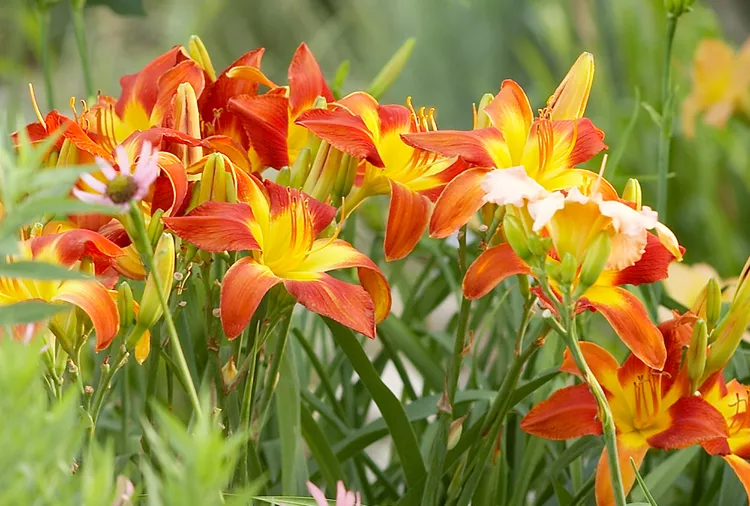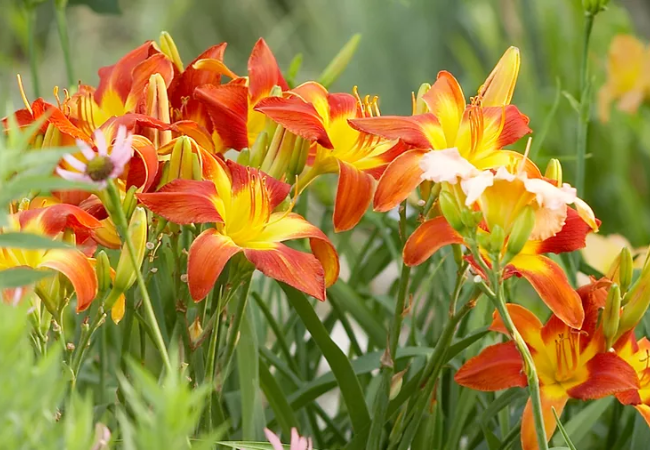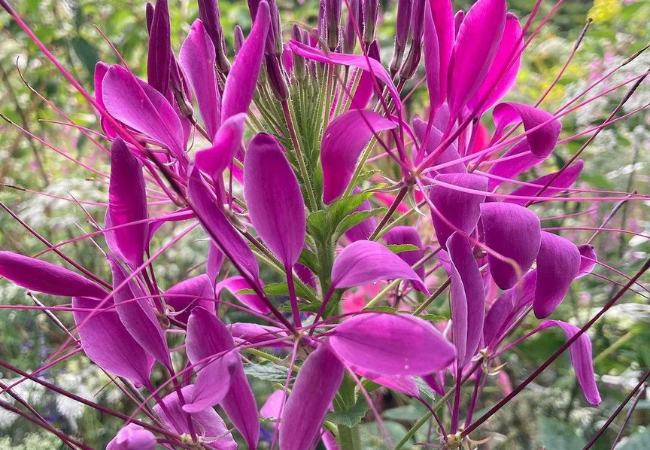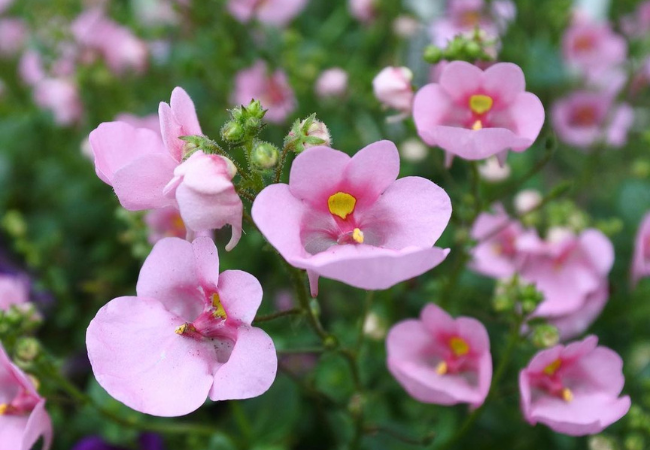Discover the beauty and versatility of Daylilies. Learn about their varieties, care tips and landscape uses in this comprehensive guide to these popular, easy-to-grow perennials.
Daylilies are beloved perennials known for their vibrant colors and easy care. These adaptable plants have earned the nickname “perfect perennial” due to their resilience and long blooming period. In this article, we’ll explore everything you need to know about growing and enjoying daylilies in your garden.
Here’s an easy and verified chart for Daylilies:
| Category | Details |
|---|---|
| Botanical Name | Hemerocallis spp. |
| Common Name | Daylily |
| Plant Type | Herbaceous perennial |
| Hardiness Zone | Zones 3-9 (depending on species) |
| Sun Exposure | Full sun to part shade |
| Soil Type | Well-draining, fertile soil |
| Watering Needs | Average; drought tolerant once established |
| Growth Habit | Clump-forming |
| Height/Spread | 1-4 feet tall, spread of 1-3 feet |
| Special Features | Large, trumpet-shaped flowers in various colors (orange, yellow, pink, red, purple, white); blooms in summer; attracts pollinators; deer resistant |
What are Daylilies?

Daylilies (Hemerocallis) are flowering plants known for:
- Trumpet-shaped blooms that typically last one day
- Long, strappy leaves
- A wide range of colors and flower forms
- Ability to thrive in various conditions
Learn more about daylily species from the USDA Plants Database.
Common Varieties
There are thousands of daylily cultivars, including:
- Stella de Oro (golden yellow, reblooming)
- Happy Returns (lemon yellow, long-blooming)
- Pardon Me (ruby red with yellow throat)
- Purple d’Oro (purple with yellow throat)
The American Daylily Society offers more information on different daylily varieties.
Growing Daylilies
Daylilies are relatively easy to grow:
- Sunlight: Full sun to partial shade
- Soil: Well-draining, fertile soil
- Water: Regular watering, but tolerant of short dry spells
- Hardiness: Most are hardy in USDA zones 3-9
For detailed growing instructions, visit the Clemson Cooperative Extension website.
Planting and Care
To grow healthy daylilies:
- Plant in spring or fall
- Space plants 18-24 inches apart
- Deadhead spent blooms to encourage more flowers
- Divide clumps every 3-5 years to maintain vigor
The University of Minnesota Extension provides more tips on daylily care.
Uses of Daylilies
Daylilies have various uses in the garden:
- Border plants
- Mass plantings for color impact
- Erosion control on slopes
- Edible flowers (certain varieties)
Learn about using daylilies in landscaping from the Missouri Botanical Garden.
Daylilies in the Garden
Daylilies can be versatile additions to your garden:
- Plant along walkways or driveways
- Use in mixed perennial borders
- Grow in containers
- Combine with ornamental grasses for texture contrast
For landscaping ideas, check out the Cornell University Cooperative Extension guide.
Pests and Diseases
While generally hardy, daylilies can face some challenges:
- May be susceptible to aphids or spider mites
- Can develop fungal diseases in overly wet conditions
- Deer and rabbits may browse on foliage and buds
The University of Illinois Extension offers advice on managing daylily pests and diseases.
Propagation
You can propagate daylilies through:
- Division of mature clumps
- Seed sowing (though this method is slower and may not produce true-to-parent plants)
Learn more about propagating perennials from the Purdue University Extension.
Ecological Benefits
Daylilies can support local ecosystems:
- Attract pollinators like bees and butterflies
- Provide cover for small animals
- Some native species support local wildlife
Discover more about gardening for pollinators at the U.S. Forest Service website.
Fun Facts about Daylilies
- Despite their name, some modern daylily cultivars have flowers that last more than one day
- Daylilies are not true lilies; they belong to a different plant family
- In some cultures, daylilies are grown as a food crop for their edible buds and flowers
Daylilies in American Gardens
Daylilies have become popular in American gardens due to:
- Their adaptability to various climates and soil types
- Low maintenance requirements
- Long blooming period with proper selection of varieties
Learn more about incorporating perennials into your garden from the National Gardening Association.
Daylilies are versatile, beautiful and easy-to-grow perennials that can enhance any garden. With their wide range of colors, long blooming period and adaptability to various conditions, it’s no wonder they’ve earned the title of “perfect perennial.” Whether you’re a beginner gardener or an experienced enthusiast, daylilies are sure to bring joy and color to your outdoor space for years to come.
For more information on perennial flowers, visit the American Horticultural Society website.
For more gardening tips and plant care guides, visit usagardenhub.com.







One comment on “Daylilies : The Carefree Beauties of American Gardens”